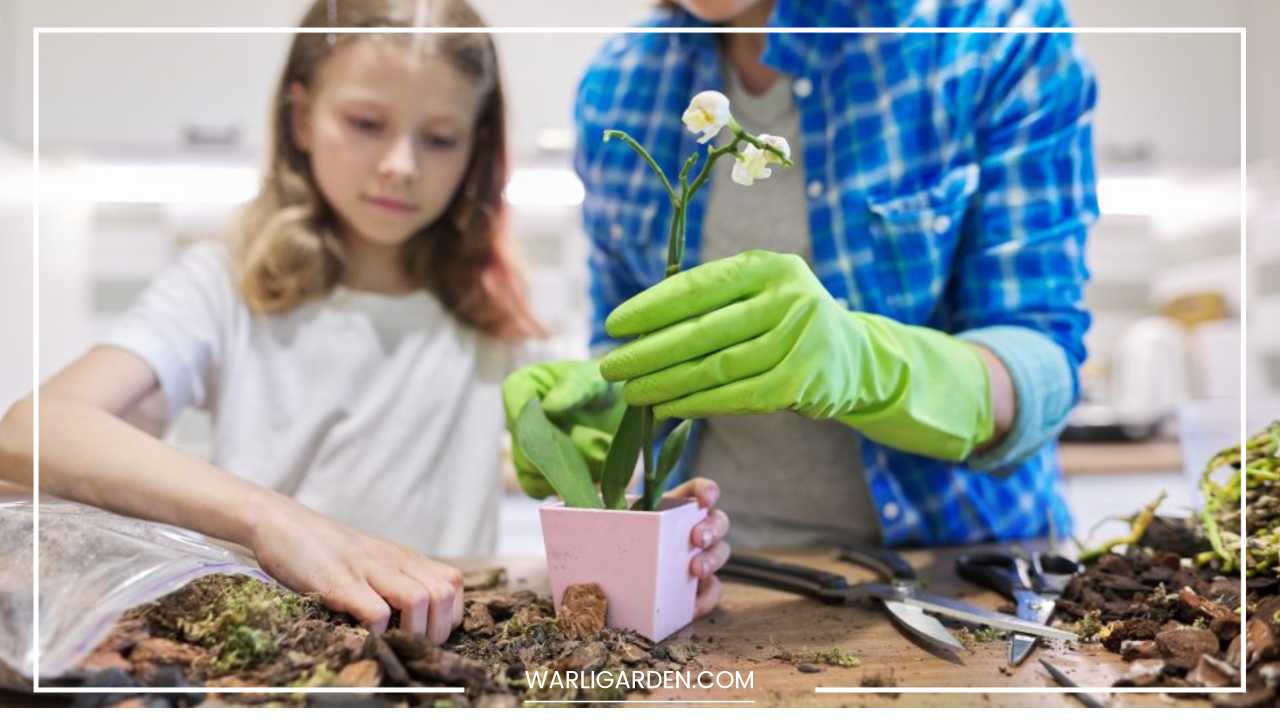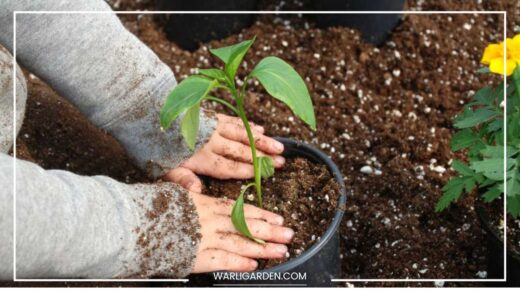How to Grow Orchids Indoor

Grow Orchids Indoor
The Orchid Whisperer’s Guide: Cultivating Beauty Indoors
The orchid, a symbol of elegance and longevity, has captivated hearts for centuries. But their exotic allure often leads to the misconception that they’re difficult to grow indoors.
The truth is, with a little understanding of their needs, these stunning plants can thrive in your home, transforming any space with their vibrant blooms.
This guide unveils the secrets to cultivating orchids indoors, from choosing the perfect spot to coaxing them to rebloom.
Understanding Your Orchid
Before diving into specific care techniques, let’s delve into the fascinating world of orchids. These epiphytes, meaning they grow on other plants in the wild, have unique needs compared to typical houseplants.
Their aerial roots absorb moisture and nutrients from the air, and their potting medium provides support rather than holding soil. Knowing this is key to providing the right environment for them to flourish.
Types of Orchids:
The orchid family is incredibly diverse, with over 28,000 species boasting a kaleidoscope of colors, shapes, and sizes. Here are a few popular varieties commonly found in homes:
- Phalaenopsis (Moth Orchid): The most popular choice for beginners, known for their long-lasting, butterfly-like blooms.
- Dendrobium: Available in a wide variety of colors and growth habits, some with cascading flowers.
- Cattleya: Renowned for their large, fragrant blooms in vibrant colors.
- Paphiopedilum (Slipper Orchid): Characterized by unique pouch-shaped flowers.
Indian Delights:
India boasts a rich variety of indigenous orchids, some well-suited for indoor cultivation. If you’re in India, consider these native gems:
- Vanda coerulea (Blue Vanda): Showcasing stunning blue blooms, thrives in warm, humid conditions.
- Cymbidium aloifolium: Produces fragrant, long-lasting spikes of yellow or green flowers.
- Dendrobium fimbriatum (The Lace Orchid): Features delicate white flowers with fringed edges.
Can’t Cut It? Propagating Without Cuttings
Unlike most houseplants, orchids don’t propagate easily from stem cuttings. However, there are alternative methods for experienced orchid enthusiasts:
- Keiki Propagation: Some orchid varieties, like Phalaenopsis, produce small plantlets called keikis on their flower spikes. Once the keiki develops roots, you can carefully separate it from the mother plant and pot it individually.
- Dividing at Repotting: When repotting a mature orchid with multiple growths (pseudobulbs), you can sometimes divide it into separate plants, ensuring each division has healthy roots and shoots.
A World of Water: Beyond Soil
Many orchid varieties thrive in a soilless medium like orchid bark, which allows for excellent air circulation around the roots. Here’s how to cultivate orchids in a water-based system:
- Choosing the Container: Opt for a clear glass vase to monitor root health. Fill it with ceramic planting media like LECA (lightweight expanded clay aggregate) to provide support.
- The Watering Dance: Submerge the roots in water for 15-20 minutes, allowing them to absorb moisture thoroughly. Remove the vase and let it drain completely before placing it back. Repeat this process every 7-10 days, depending on climate and plant size.
- Nutrient Boost: Use a water-soluble orchid fertilizer once a month during the growing season, following the recommended dilution ratio.
Going Green-Free: Exploring Hydroponics
Hydroponics takes the concept of water culture a step further. Here, the orchid roots are suspended in a closed container with a nutrient-rich water solution.
This method requires a specific setup with an air pump to provide oxygen to the roots. While effective for experienced growers, hydroponics demands precise monitoring of nutrient levels and water quality.
From Seed to Bloom: A Long and Patient Journey
Propagating orchids from seed is an intricate process reserved for dedicated hobbyists with sterile laboratory facilities. Orchid seeds are minuscule and lack the necessary nutrients for independent growth.
Germinating them requires a symbiotic relationship with a specific fungus and controlled aseptic conditions. Given the complexity and time commitment, it’s generally easier to acquire new orchid plants from nurseries or reputable sellers.
The Need for Speed: Accelerating Growth
While there’s no magic trick to make orchids grow faster, you can optimize their environment to encourage healthy growth and potentially more frequent blooms:
- Light Matters: Provide bright, indirect light for most orchid varieties. A few hours of morning sun is ideal, but avoid harsh afternoon sun that can scorch the leaves.
- Temperature Talk: Maintain consistent temperatures between 60-80°F (15-27°C) for most orchids. Avoid sudden temperature fluctuations that can stress the plant.
- Humidity Haven: Orchids love humidity. If your home is dry, consider using a pebble tray filled with water under the pot, misting the plant regularly (avoiding the flowers), or grouping your orchids together to create a more humid microclimate.
- Fertilization Fiesta: During the active growing season (usually spring and summer), use a balanced orchid fertilizer diluted to half strength once a week. Flush the potting medium with plain water once a month to prevent mineral buildup.
- Root TLC: Healthy roots are crucial for orchid health. When watering, ensure the roots turn green and plump, indicating proper hydration. Avoid overwatering, which can lead to root rot.
Bouquet to Beauty: Repurposing Spent Blooms
Unfortunately, orchids from bouquets are not viable for long-term growth. The flower spike has already completed its blooming cycle, and the remaining stem lacks the necessary nodes for new growth to emerge. However, you can appreciate the beauty for a while by following these tips:
- Trim and Treat: Cut the flower stem just above a healthy node (a slight swelling on the stem). Apply a dab of cinnamon or fungicide to the cut end to prevent infection.
- Water Wisely: Place the orchid in a container with enough water to barely touch the stem base. Change the water every 2-3 days to prevent bacterial growth.
- Enjoy the Journey: While unlikely, with proper care, there’s a slight chance a new flower spike might emerge from the existing node. However, it’s best to appreciate the remaining blooms and consider acquiring a new orchid plant for long-term enjoyment.
Beyond the Basics: Troubleshooting Common Orchid Issues
Even with the best intentions, orchid growers can encounter challenges. Here’s a quick guide to identify and address some common problems:
- Drooping or Wrinkled Leaves: This often indicates dehydration. Soak the orchid thoroughly and adjust your watering frequency.
- Yellowing Leaves: This could be due to natural aging, excessive sunlight, or nutrient deficiency. Remove yellowed leaves and adjust light exposure or fertilization practices.
- Brown Spots on Leaves: Fungal or bacterial diseases can cause brown spots. Isolate the plant, remove affected leaves, and treat with a fungicide or bactericide if necessary.
- No Blooms: Lack of light, improper fertilization, or temperature fluctuations can prevent blooming. Ensure your orchid receives adequate light, fertilize during the growing season, and maintain consistent temperatures.
The Final Bloom: A Rewarding Journey
With a little understanding and consistent care, you can cultivate thriving orchids that grace your home with their exquisite beauty.
Remember, these are living things, and their needs may vary slightly depending on the specific variety and your local climate.
Observe your orchid, adjust your routine as needed, and celebrate the joy of nurturing these magnificent plants as they reward you with their breathtaking blooms.
Delving Deeper: Advanced Orchid Care
For orchid enthusiasts seeking to elevate their cultivation skills, here are some advanced topics to explore:
- Light Meter Magic: Invest in a light meter to precisely measure the light intensity your orchid receives. This helps ensure they get the optimal amount of indirect light for healthy growth and blooming.
- Repotting Rhapsody: Repot your orchid every 1-2 years, or when the roots outgrow the pot or the potting medium degrades. Use a pot with good drainage and a fresh orchid mix specifically formulated for optimal air circulation.
- Seasonal Shifts: Some orchid varieties have specific blooming seasons triggered by temperature changes. Research your orchid’s specific needs and adjust temperatures slightly (within a healthy range) to encourage blooming.
- Advanced Techniques: Techniques like controlled dehydration or spike manipulation (cutting the flower spike after blooming to encourage new growth) can be explored for experienced growers, but proceed with caution and thorough research to avoid harming your plant.
Resources for the Discerning Orchidist
The world of orchids is vast and ever-evolving. Here are some resources to fuel your orchid obsession:
- Orchid Societies: Join a local orchid society to connect with other enthusiasts, attend workshops, and gain valuable insights from experienced growers.
- Online Resources: Reputable websites of orchid societies, botanical gardens, and orchid suppliers offer a wealth of information on specific care techniques, troubleshooting guides, and identification tips.
- Books and Magazines: Invest in orchid-specific books and magazines for in-depth information on cultivation techniques, new varieties, and expert advice.
The Final Note: Embrace the Journey
Growing orchids is a rewarding yet continuous learning experience. Don’t be discouraged by setbacks; view them as opportunities to refine your care routine.
With patience, dedication, and the knowledge gleaned from this guide, you’ll be well on your way to becoming a true orchid whisperer, cultivating a flourishing orchid haven in your home.


